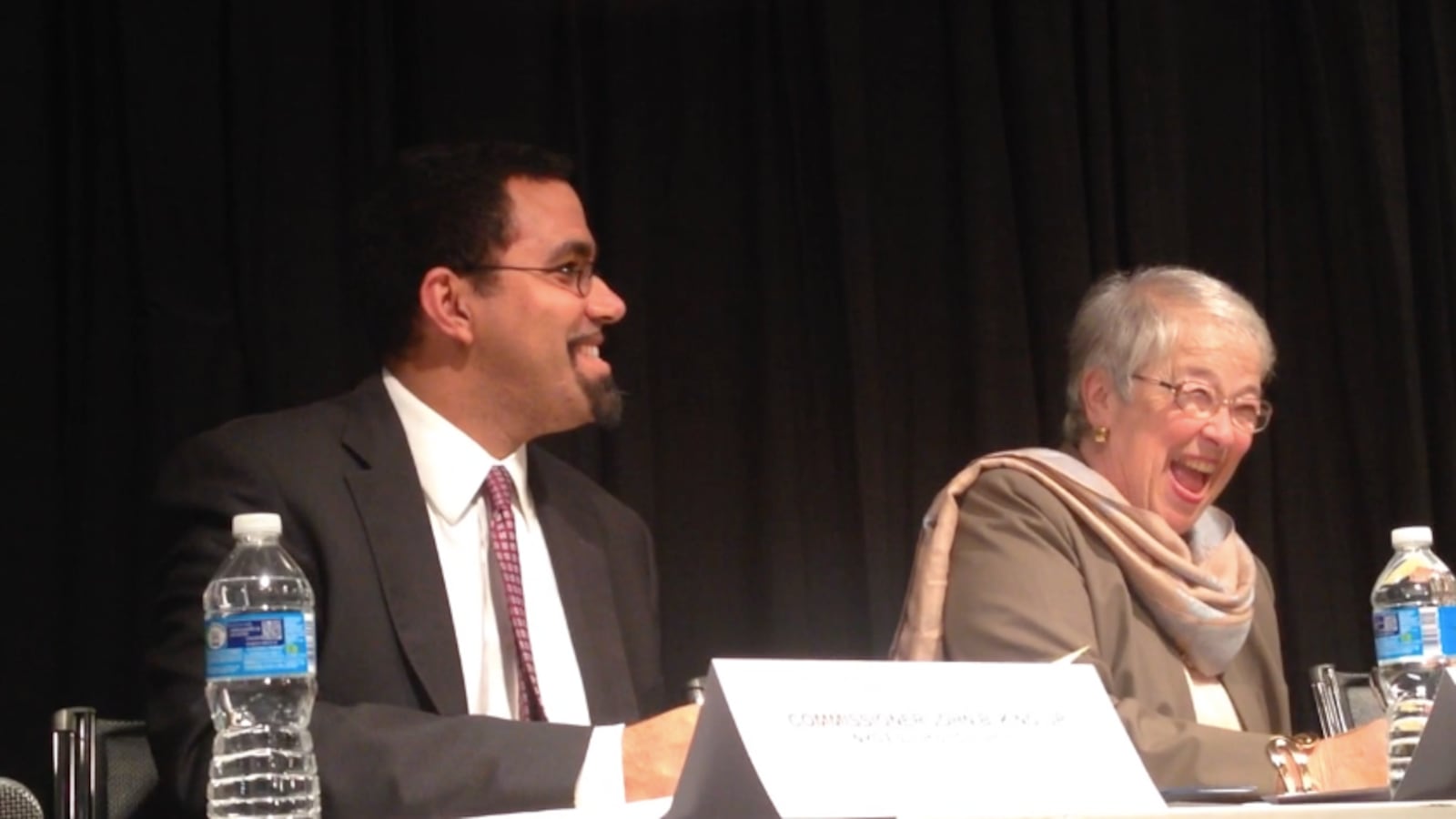Three years after being pressured to improve the education of English language learners, city officials under a new regime say they will tackle the problems without any arm-twisting.
Chancellor Carmen Fariña and State Education Commissioner John King on Monday agreed to increase enrollment in bilingual programs, put more qualified teachers in their classrooms, better match newly-arrived students with language services, and hold principals accountable for implementing their plan. The agreement sets yearly targets but did not include details about how the city will meet those goals.
Whether school districts do enough to provide non-English speaking students with equal educational opportunities has been under scrutiny for decades. In recent years, federal civil rights agencies have become more aggressive in their enforcement of civil rights laws, taking action in districts like Boston and Los Angeles. In 2011, New York City under Mayor Michael Bloomberg was put on a “corrective action plan” by the state, and agreed to open 125 bilingual programs in three years and reduce the share of newly-arrived students who weren’t tested for language services in a timely manner.
By 2013, a report from the city showed that the city had created 60 bilingual programs in two years and reduced the percentage of students who weren’t tested in a timely manner to less than 2 percent. That report was authored by Angelica Infante, then a top official with the city Department of Education. A top state education official responded two months later to say the city’s work has “satisfactorily met” its requirements.
But Infante, now the state’s top bilingual education official, said Monday that the city’s efforts had come up short when she was there.
“We honestly believe that there is a level of commitment that we have not experienced before,” Infante said.
The 13-page memorandum of understanding that King and Fariña signed Monday in midtown Manhattan offers an outline of the city’s plans. Some of the goals will likely be easier to obtain than others.
For instance, all students will need to be enrolled in one of three types of bilingual programs by the 2018-19 school year. A 2013 report said that just 159 students, or 0.2 percent, weren’t enrolled in a bilingual program and another 4,111 students were not receiving bilingual services and had personalized learning plans due to a disability.
The city also agreed to make all high schools hit ELL enrollment targets by the 2016-17 school year, cut down on the number of students who have received language services for more than six years, and make sure all language teachers are properly credentialed by the 2018-19 school year.
But the city declined to provide updated figures that it will use to measure progress around these goals. A spokeswoman said they would be “established over the next few weeks.”
State officials were also vague about how it would enforce its new agreement. Infante said the state’s intervention will “be dependent upon where the movement has not happened.”
The city has already made a few changes that Fariña touted after the signing event, which was held at Instituto Cervantes, a cultural center funded by the Spanish government.
First, the city set aside $13 million in the budget to support the initiative, much of which would go toward training teachers. The city already hosted an all-day professional development session for more than 300 teachers last week, “something they haven’t had in years,” Fariña said.
Fariña has said she wants to create 40 dual-language programs, in which fluency in both English and another language are equally encouraged, and is asking principals to apply to host those programs.
“It’s really a whole different mindset about how we’re doing this work,” Fariña said.

